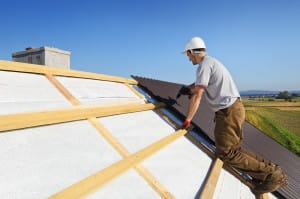Types Virginia Roofing and When to Apply Them

Types of Virginia Roofing
Steep slope
This type of Virginia roofing is generally on slopes that exceed 14 degrees. These roofing types are typically water-shedding materials that help to eliminate water pooling and heavy snow pack. The six most common types of roofing materials used for steep slopes are synthetic, wood, slate, metal, clay, and asphalt. How to assemble these materials on the roof depends on which material is used. It also depends on the exact slope of the roof. However, there are some basic components that contractors use.
First, there is a roof deck. This component is typically wood-based and is the structural substrate of the roof. The roof deck is often made with oriented strand board or plywood. Next comes the underlayment. This component provides protection to the roof until you install covering. After installing the covering, it becomes the secondary layer of weatherproofing. Some contractors call the underlayment “paper”. The final component of a steep slope roof is the roof covering, which is often with shingles, shakes, or tile.
Low slope
This type of Virginia roofing is a weatherproof solution to roofs. Because of this, these roofs will not shed the elements of nature. The five most common types of low slope roofing in Virginia are spray polyurethane foam-based, single-ply membranes, built-up roof, polymer-modified bitumen, and metal panel. Weatherproofing layers are first applied to the roof in order to keep water out both during assembly and indefinitely. The reinforcement is next, adding strength and dimensional stability. Then, you add the surfacing, protecting the other components and adding to the entire roof fire resistance, solar reflectivity, and hail resistance.
The different types Virginia roofing are important for any homeowners to understand. What works for their neighbor’s roof might not be the best for their own. Knowing the different types of roofs and when to apply them will help them to make the very best decision.
